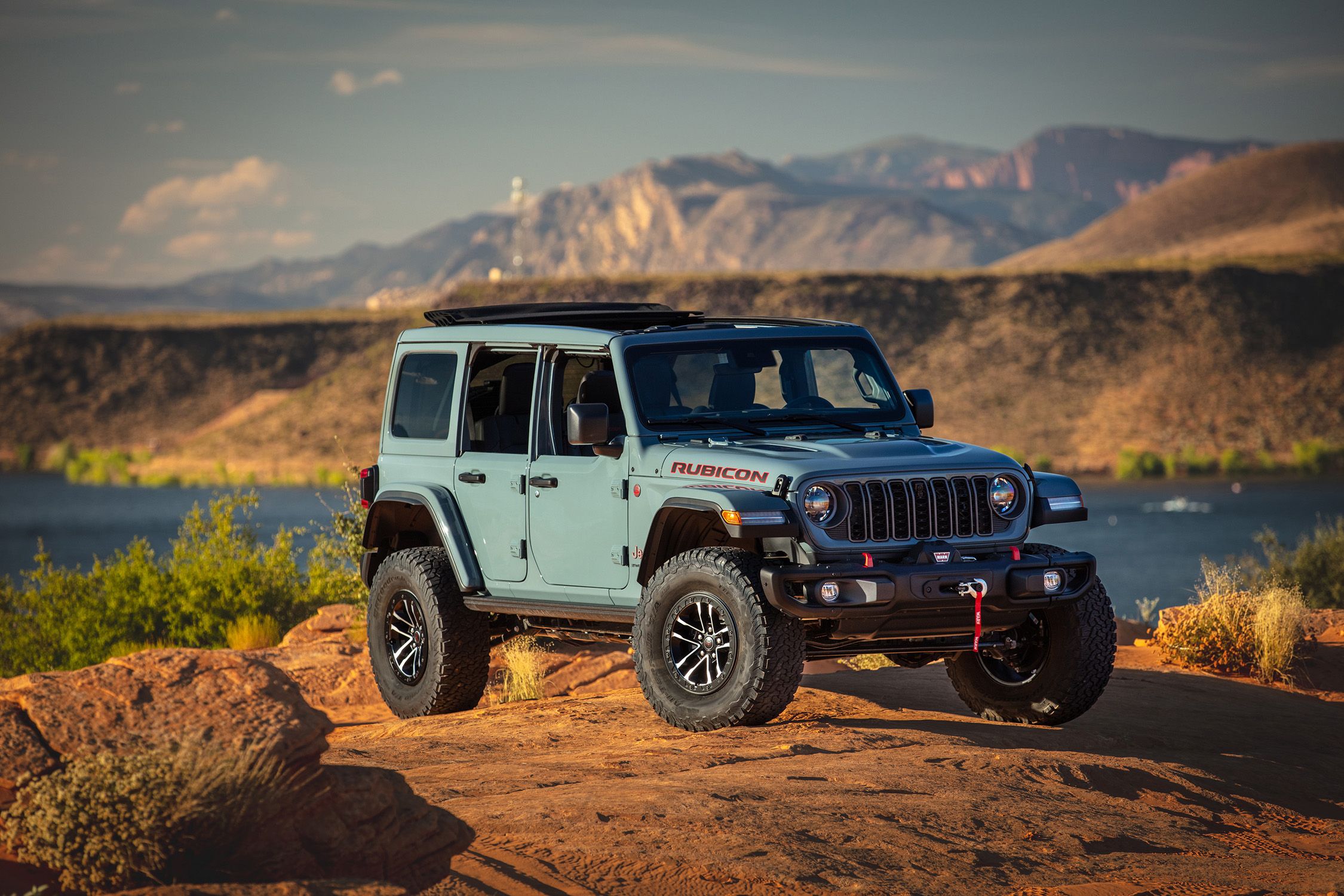Few automotive brands evoke the spirit of off-road adventure quite like Jeep. With a legacy that dates back to World War II, Jeep has long been synonymous with rugged reliability, freedom, and go-anywhere capability. Whether it’s crawling up rocky trails, fording muddy rivers, or climbing steep mountain passes, the Jeep nameplate has come to represent the ultimate off-road companion.
Yet, despite this heritage, not every Jeep model lives up to the hype. Over the years, the brand has expanded into new segments to appeal to a broader market—city drivers, young professionals, families—and in doing so, has released models that vary drastically in their ability to handle off-road abuse.
This split in Jeep’s lineup has created a unique paradox. On one side are the trail-conquering legends—machines engineered from the ground up for challenging environments. These Jeeps are purpose-built, often coming equipped with solid axles, locking differentials, high-clearance suspension systems, and low-range transfer cases.
They are the embodiment of Jeep’s adventurous DNA and have proven themselves repeatedly on iconic routes like the Rubicon Trail and Moab’s red rock deserts. Off-roaders cherish these models for their mechanical simplicity, aftermarket support, and sheer capability under pressure.
On the other side are the so-called “mall-crawlers”—models designed with aesthetics and comfort in mind rather than trail performance. While they may wear the Jeep badge and feature rugged exterior styling, these vehicles often fall apart when asked to do more than navigate a gravel driveway or slushy parking lot.
They might boast “Trail Rated” badges or advanced terrain management systems, but beneath the marketing gloss, many of these Jeeps lack the hardware necessary to truly perform off-road.
Whether it’s a weak suspension system, an underwhelming drivetrain, poor ground clearance, or overcomplicated electronics, these models are the cautionary tales of what happens when style overtakes substance.
In this article, we’ll take a close look at both ends of the spectrum. First, we’ll highlight five Jeep models that are true off-road beasts—vehicles built to withstand harsh terrain, extreme elements, and the kind of punishment that would break lesser SUVs.
These are the ones you can trust when the pavement ends and the trail begins. Then, we’ll shift focus to the other side—the Jeeps that promise adventure but deliver disappointment. These are the models that tend to struggle, break down, or outright fail when pushed off-road.
Our goal isn’t to shame or glorify, but to provide an honest, informed breakdown of which Jeep models have earned their off-road reputation and which ones have tarnished it. Whether you’re a seasoned off-roader, a weekend warrior, or someone considering a Jeep for your next adventure, this guide will help you understand which models are built for the wild—and which ones are best left on the road.
Also Read: 5 Trucks With the Best Cold Weather Reliability and 5 That Freeze Up Fast
5 Jeep Models That Handle Off-Road Like a Beast

1. Jeep Wrangler Rubicon (TJ, JK, JL Generations)
The Jeep Wrangler Rubicon stands as the pinnacle of factory off-road engineering, an SUV designed with unapologetic trail dominance in mind. Launched in 2003 with the TJ generation, the Rubicon immediately distinguished itself with features most vehicles could only dream of: front and rear locking Dana 44 axles, a 4:1 low-range transfer case, heavy-duty rock rails, and electronic sway bar disconnects.
These additions weren’t just marketing fluff—they were the real deal, taken directly from off-road competition requirements and integrated into a street-legal production vehicle. Jeep essentially handed enthusiasts a rig that could tackle the Rubicon Trail (from which it gets its name) with zero aftermarket modifications, an unprecedented move at the time.
As the Wrangler evolved into the JK generation (2007–2018), the Rubicon package grew stronger. Jeep responded to consumer demands with a four-door version (the Unlimited), which made the platform far more versatile without compromising its off-road roots.
This generation also introduced improved ground clearance, stronger axles, and updated interiors while still retaining the solid front and rear axles that make articulation and durability top-tier. The Rubicon JK became the off-road benchmark not only in the Jeep lineup but also in the wider 4×4 world, with a flood of aftermarket support that further cemented its legendary status.
Then came the JL generation in 2018, which refined nearly every aspect of the Rubicon without dulling its edge. It offered better handling, a lighter chassis with aluminum body panels, and multiple powertrain options—including a torquey EcoDiesel that provided exceptional crawling power.
Jeep even added advanced terrain management systems, enhanced crawl ratios, and stronger components like reinforced transfer cases. The Rubicon JL remains the high-water mark for off-road readiness straight from the factory floor. Whether you’re a weekend warrior or a die-hard overlander, the Rubicon is simply in a league of its own when it comes to conquering terrain right off the showroom floor.
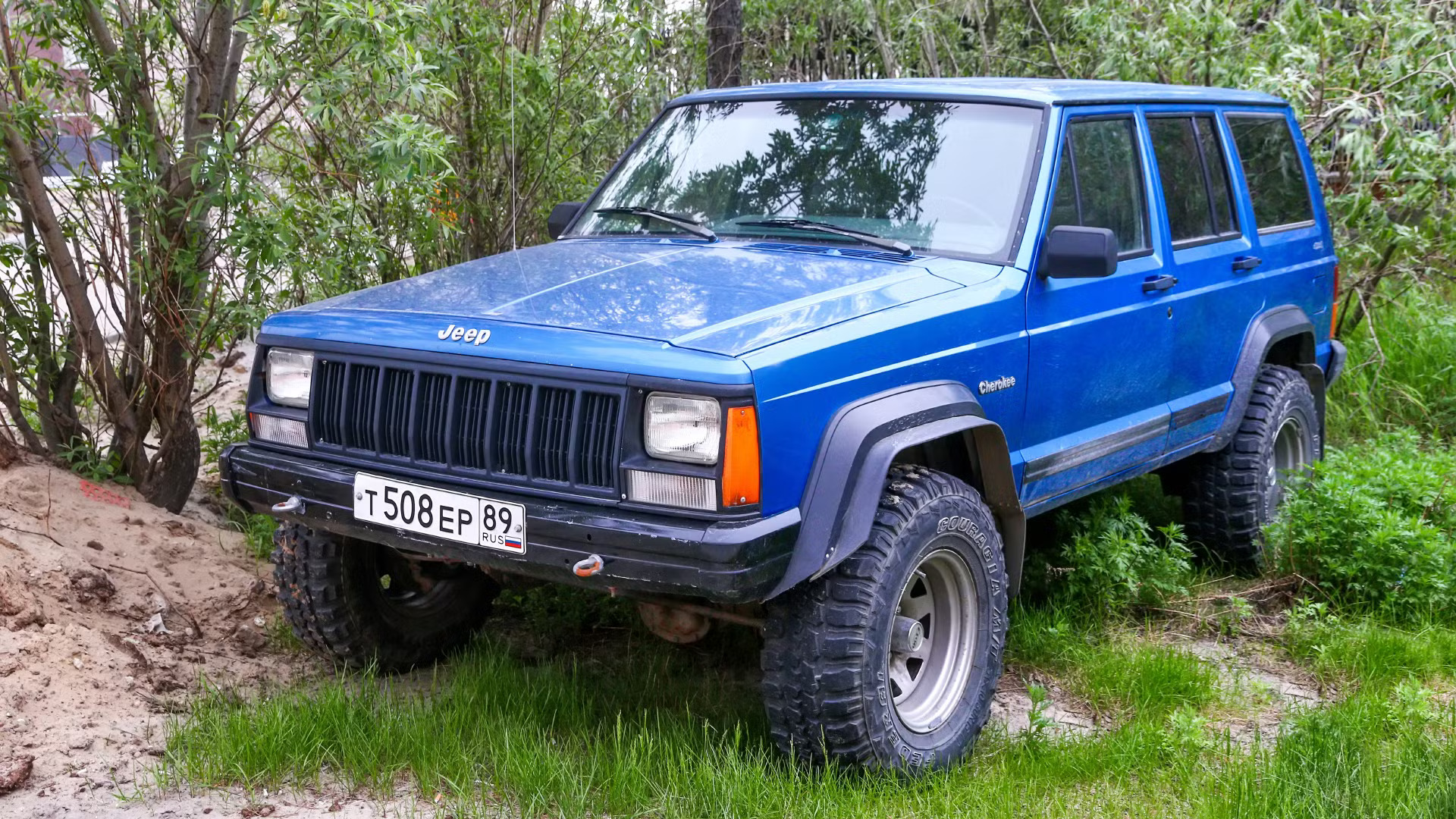
2. Jeep Cherokee XJ (1984–2001)
At first glance, the Jeep Cherokee XJ doesn’t scream “off-road beast” with its boxy frame, station-wagon silhouette, and utilitarian look. But underneath that simple exterior is one of the most beloved and battle-proven platforms in off-road history.
The XJ pioneered unibody construction in an SUV long before it became standard, managing to combine rigidity with lightweight agility in a way few manufacturers could match. Combine that with Jeep’s iconic 4.0L inline-six engine—a virtually indestructible powerplant known for its torque, reliability, and ease of maintenance—and you get a vehicle that can tackle trails with fearless tenacity.
The XJ’s off-road prowess comes from a perfect mix of size, simplicity, and strength. Its compact footprint allows it to navigate tight trails and wooded paths where larger rigs would struggle. A solid front axle gives it superior articulation and durability, while its lightweight design prevents the kind of strain on components that plagues heavier 4x4s.
Even in stock form, the XJ can outperform many modern vehicles that cost three times as much. Add a modest lift kit, some bigger tires, and perhaps a locker, and suddenly you’re driving a trail monster that can hang with Wranglers and outlast them in many cases.
Another major draw is the aftermarket scene, which has exploded for the XJ. Everything from rock sliders and winches to long-arm suspension systems and upgraded drivetrain components is available and often affordable. Many off-roaders consider the XJ the ultimate budget build—affordable to purchase, easy to work on, and remarkably capable.
Its legacy endures decades after the last unit rolled off the production line. In a world of overengineered crossovers, the XJ remains a symbol of honest, old-school off-road performance that doesn’t need to prove itself—it already did, over and over again, on trails across the globe.
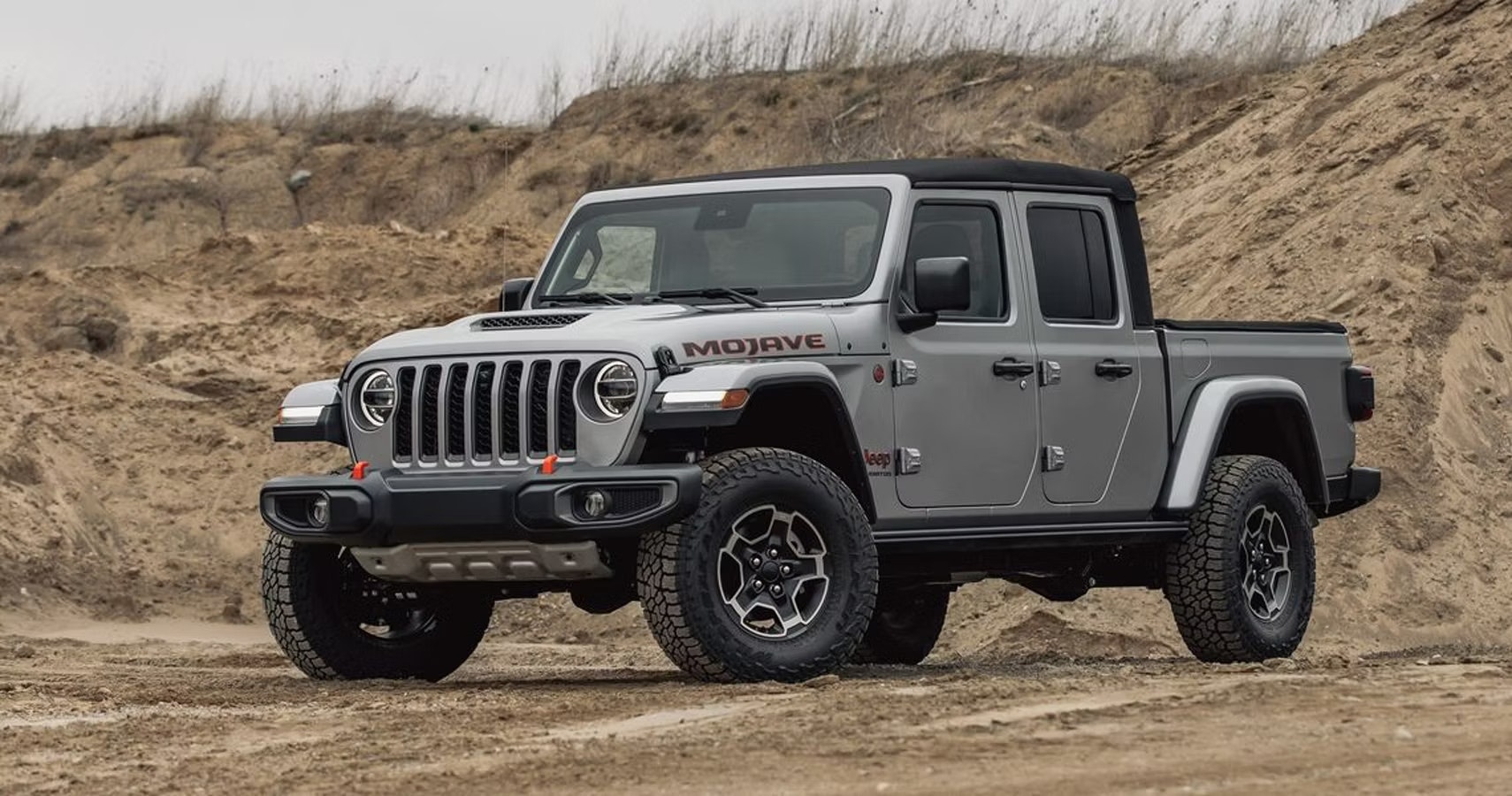
3. Jeep Gladiator Mojave (2020–Present)
When Jeep released the Gladiator in 2020, off-roaders and pickup enthusiasts alike raised their eyebrows. Could this Wrangler-based truck hold its own off-road, or was it a novelty act trading on Jeep’s name? The Mojave answered that question emphatically—and with a twist.
Instead of focusing purely on rock crawling like its Rubicon cousin, the Gladiator Mojave was engineered specifically for high-speed desert terrain. With a reinforced frame, FOX 2.5-inch internal bypass shocks, front hydraulic jounce bumpers, and desert-rated durability testing, the Mojave is not just trail-capable—it’s a dirt-slinging, dune-busting, off-road performance machine.
The key advantage of the Mojave lies in its ability to absorb harsh terrain at speed without sacrificing control or stability. Where most Jeeps are built to crawl, the Mojave is built to soar. Its suspension system is designed to flex, rebound, and stabilize under punishing conditions—think Baja-style racing or extended overland journeys through the desert heat.
The hydraulic jounce bumpers act like secondary shocks, allowing the Mojave to land harder, corner faster, and handle rough terrain with a composure few other factory trucks can manage. Its hood scoop, aggressive tires, and 1-inch lift aren’t just for show—they’re functional design elements that serve a purpose in brutal environments.
What’s impressive is that the Mojave still retains much of the Jeep DNA—solid rear axles, locking rear differential, and Trail Rated credibility—while creating a new category of off-road performance. It’s a vehicle that blends utility, fun, and durability in a way that bridges the gap between everyday truck and off-road racer.
Whether you’re bombing through dunes or navigating dry riverbeds, the Gladiator Mojave proves that Jeep can do more than just crawl over rocks. It can fly—literally and figuratively—across terrain that would leave other trucks in the dust.
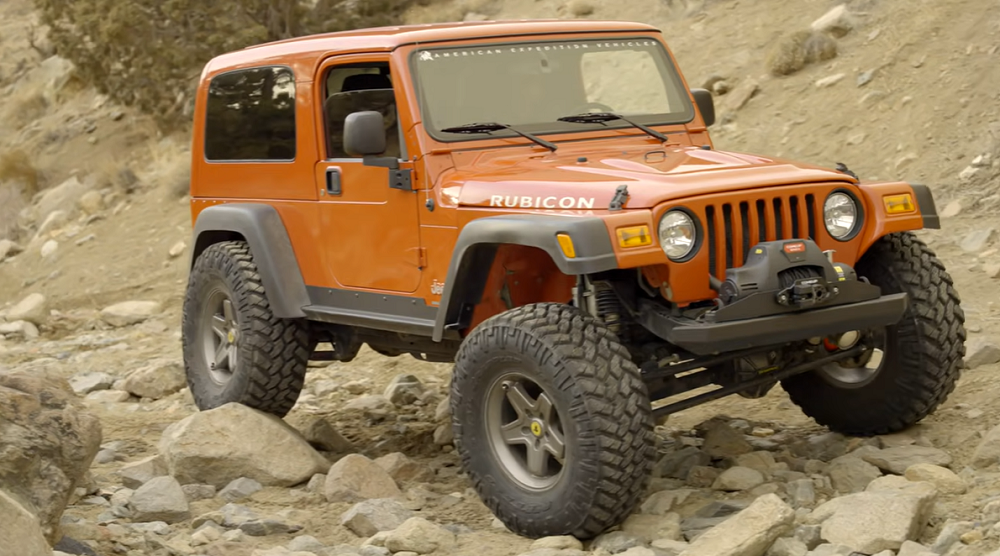
4. Jeep Wrangler LJ (2004–2006)
The Jeep Wrangler LJ, often referred to as the “Unlimited” TJ, occupies a special place in the hearts of Jeep aficionados. Produced for only a short span from 2004 to 2006, this rare model combined the beloved features of the TJ Wrangler—solid axles, body-on-frame construction, and the venerable 4.0L inline-six engine—with an extended wheelbase.
This additional length (10 inches longer than a standard TJ) offered improved ride stability, better weight distribution, and more cargo space—all without compromising the compact agility that made the TJ a favorite among trail enthusiasts.
One of the LJ’s most significant advantages off-road is its enhanced departure angle and stability on steep inclines. The longer wheelbase makes it less prone to tipping during climbs and descents, which is especially helpful on uneven or technical terrain.
This improvement didn’t come at the cost of maneuverability either; the LJ is still compact enough to handle tight trails, especially when compared to modern SUVs that continue to balloon in size. The longer wheelbase also allows for longer control arms in suspension lifts, which improves articulation and ride quality, two critical factors in off-road performance.
Another benefit is the LJ’s simplicity. Before the influx of digital tech and drive-by-wire systems, the LJ remained true to Jeep’s roots: mechanical, durable, and easy to modify. It’s one of the most sought-after used Jeeps for serious off-road builds, and its compatibility with TJ aftermarket parts means customization is both easy and relatively affordable.
Whether you want a weekend crawler, an overlanding rig, or a hardcore rock machine, the LJ gives you a perfect platform to build from. Its combination of strength, size, and heritage makes it a timeless beast that continues to earn its keep on trails long after production ceased.
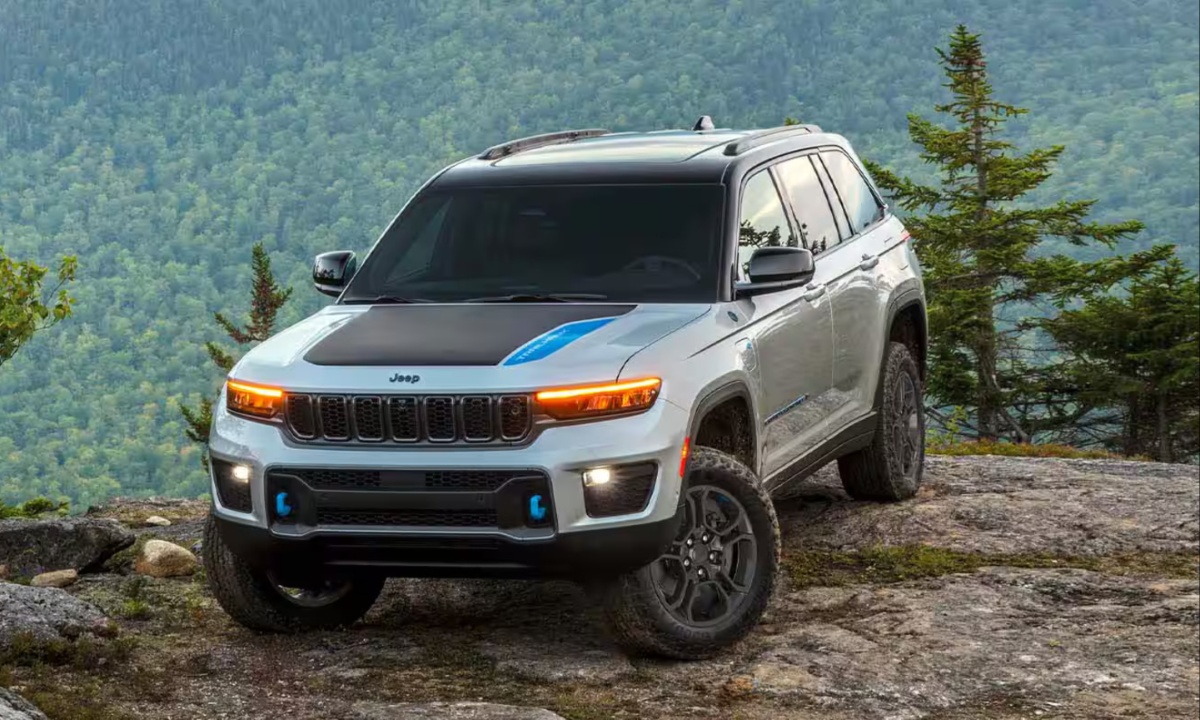
5. Jeep Grand Cherokee Trailhawk (WK2 and WL Generations)
Luxury and off-road performance usually don’t go hand-in-hand, but the Grand Cherokee Trailhawk spectacularly flips that script. Introduced in the WK2 generation (2011–2021) and continued in the current WL version (2022–present), the Trailhawk trim is the most capable version of Jeep’s flagship SUV—and it’s not just about badges and paint jobs.
This model is engineered with serious off-road systems, including Jeep’s Quadra-Drive II or Quadra-Trac II 4WD systems, air suspension that adjusts for ride height, underbody skid plates, all-terrain tires, and an advanced Selec-Terrain system that adapts power distribution for rock, mud, snow, or sand.
The Trailhawk strikes a delicate and masterful balance. It offers the comfort, tech, and safety features expected in a luxury SUV—leather seats, adaptive cruise control, large touchscreens—while hiding a true off-roader underneath. The adjustable air suspension is a standout, allowing the vehicle to raise itself over obstacles or lower for better highway aerodynamics.
In its highest setting, the Grand Cherokee Trailhawk achieves impressive ground clearance comparable to traditional off-road rigs. Combine that with Hill Descent Control, rear electronic limited-slip differential, and a well-tuned traction system, and you have a vehicle that can traverse rocky hillsides and muddy valleys without breaking a sweat.
It’s this dual personality that makes the Trailhawk exceptional. It’s not the most extreme off-roader in the Jeep lineup, but it is one of the most versatile. You can take it deep into the wilderness, sleep comfortably inside it overnight, and drive it to a business meeting the next morning without ever compromising on style or capability.
For those who want trail prowess without sacrificing refinement, the Grand Cherokee Trailhawk is a refined beast—a vehicle that shows off-roaders don’t have to choose between power and polish.
5 Jeep Models That Break Doing It
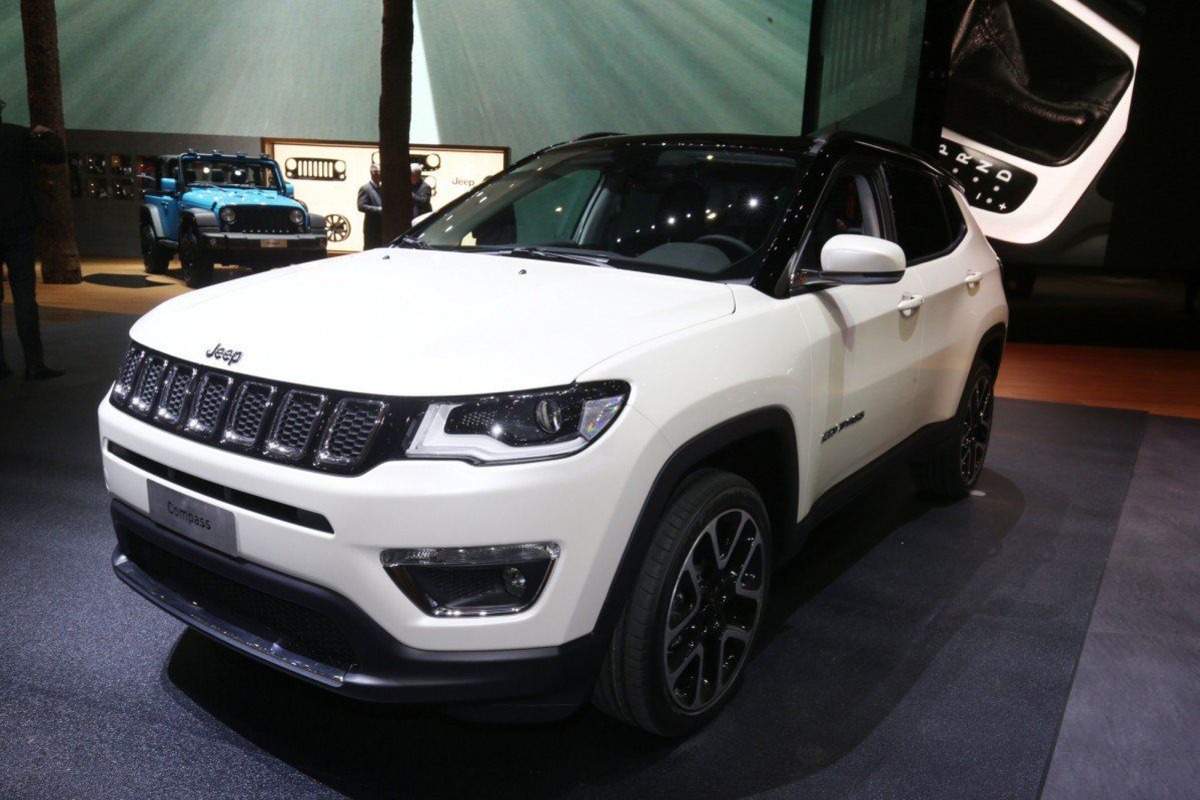
1. Jeep Compass (First Generation, 2007–2016)
The first-generation Jeep Compass was a controversial departure from Jeep’s traditional DNA—a soft-roader cloaked in rugged design but without the mechanical muscle to back it up. Built on a car-like platform shared with the Dodge Caliber and Patriot, Jeep attempted to appeal to the burgeoning compact crossover market.
Unfortunately, this gamble resulted in a vehicle that bore the iconic seven-slot grille but lacked nearly all the off-road credibility that Jeep enthusiasts expected. The Compass was front-wheel-drive in its base trim, and even the “4×4” versions featured a simplified all-wheel-drive system rather than a true four-wheel-drive with low-range gearing. For anyone venturing even slightly off the beaten path, this was a major red flag.
In practice, the Compass quickly revealed its flaws when asked to do more than navigate wet pavement or a gravel driveway. Ground clearance was insufficient, approach and departure angles were uninspiring, and the CVT (continuously variable transmission) became a consistent pain point, often overheating under moderate stress.
Owners who attempted to take their Compass off-road frequently reported cracked oil pans, damaged suspension components, and powertrain struggles, even on beginner-level trails. The so-called “Trail Rated” models, which Jeep claimed had been tested for off-road prowess, felt more like marketing experiments than genuinely capable machines. There was little in terms of locking differentials, underbody protection, or any of the traits that typically define a real trail vehicle.
Perhaps most damaging was the confusion it created around Jeep’s identity. Longtime fans of the brand were left scratching their heads. The Compass may have succeeded in attracting first-time buyers who liked the idea of rugged aesthetics with on-road comfort, but it severely undermined Jeep’s reputation for building go-anywhere machines.
While the second-generation Compass (2017–present) made vast improvements, especially in the Trailhawk trim, the original remains a textbook example of style over substance. For those who took it off-road, hoping for traditional Jeep performance, it often meant getting stuck, breaking components, or turning around in defeat. In the harsh world of off-roading, the Compass proved it was never truly meant to leave the pavement.
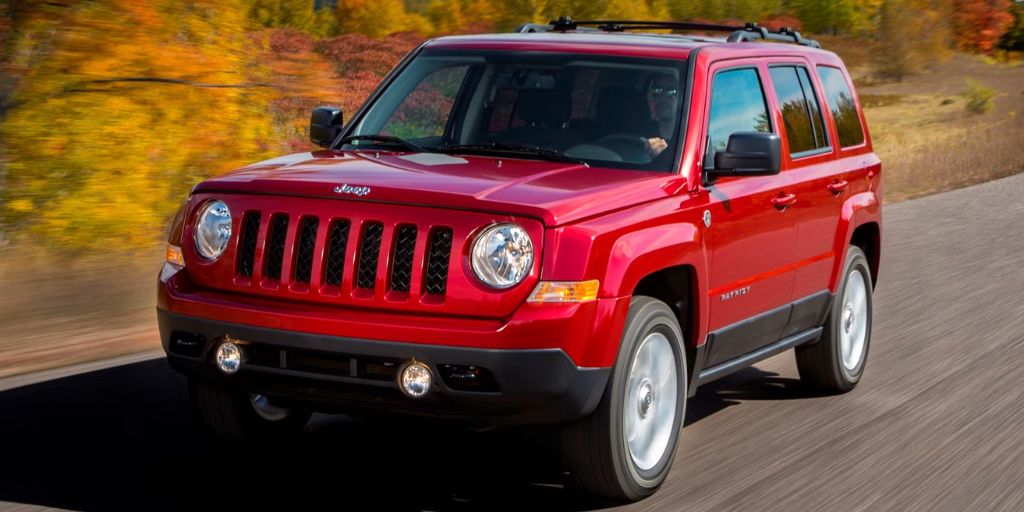
2. Jeep Patriot (2007–2017)
Like the Compass, the Jeep Patriot was introduced during a time when Jeep was trying to rebrand itself for urban drivers. While the boxy design and rugged-themed marketing suggested off-road intent, the reality was another story.
Based on the same compact platform as the Compass, the Patriot suffered from nearly all the same weaknesses: poor ground clearance, a lack of real 4×4 capability in most trims, and a mechanical layout that simply wasn’t built to handle the stress of rough terrain. The Patriot’s suspension, drivetrain, and underbody were not up to the task of serious off-road conditions, and even moderate trail use often resulted in mechanical issues.
The Patriot offered a “Freedom Drive II” package, which Jeep touted as adding off-road capability through a CVT with low-range simulation, skid plates, and increased ride height. However, this system was a band-aid at best. The CVT struggled with heat and reliability, especially when used aggressively.
Over time, owners reported a wide range of issues—from premature transmission failures to subframe rust and wheel bearing wear. On uneven terrain, the limited articulation and basic traction control systems couldn’t keep up, often leaving one or more wheels spinning uselessly in the air. Compared to even the most modestly equipped Wrangler or Cherokee, the Patriot fell far short.
In real-world off-roading scenarios, the Patriot’s weaknesses quickly became apparent. It lacked the robustness to handle rocky paths, deep mud, or steep inclines. While it may have been sufficient for light snow or forest service roads, pushing it beyond those limits often resulted in a frustrating and costly experience.
Many owners who bought the Patriot expecting traditional Jeep toughness were left disillusioned—and in some cases, stranded. The Patriot was a Jeep in name and marketing only, and for off-road enthusiasts, it served as a stark warning that not every Jeep is trail-ready.

3. Jeep Liberty KK (2008–2012)
The Jeep Liberty KK, which followed the earlier KJ generation, is often remembered as a confused attempt to blend off-road capability with urban SUV comfort. Unfortunately, it ended up delivering a compromised version of both. While the Liberty KK retained some of the brand’s off-road flair with optional four-wheel drive and the “Trail Rated” badge on some trims, it marked a major step backward in terms of mechanical durability and terrain handling.
The move to an independent front suspension—a departure from the solid front axle found in earlier Jeeps—significantly hurt its articulation and durability in challenging terrain.
One of the major issues with the KK Liberty was its weight and poor weight distribution. It was bulkier and heavier than its predecessor, making it less agile on tight trails and more likely to bottom out over obstacles. It had modest ground clearance and approach/departure angles, but nothing that inspired confidence.
Add to that a 3.7L V6 engine that was underpowered and plagued with reliability issues—like valve seat drops and oil sludge buildup—and you had a vehicle that was already on shaky ground before it even hit the trail. Transmission and transfer case problems were also common, particularly in older or heavily used models.
The Liberty’s downfall wasn’t just its underwhelming trial performance—it was how quickly it degraded under strain. Broken control arms, worn-out bushings, faulty electronics, and suspension failures were frequent complaints from off-road users. It simply wasn’t built to endure repeated abuse.
Many Jeep fans gave the Liberty KK a shot, hoping it would be a cheaper, more practical alternative to the Wrangler. But in reality, it often turned into a money pit. Repairs piled up, modifications were limited, and resale values dropped quickly. It serves as a cautionary tale that not all “Trail Rated” vehicles can survive the trail—and that comfort-focused revisions can often come at the expense of durability.
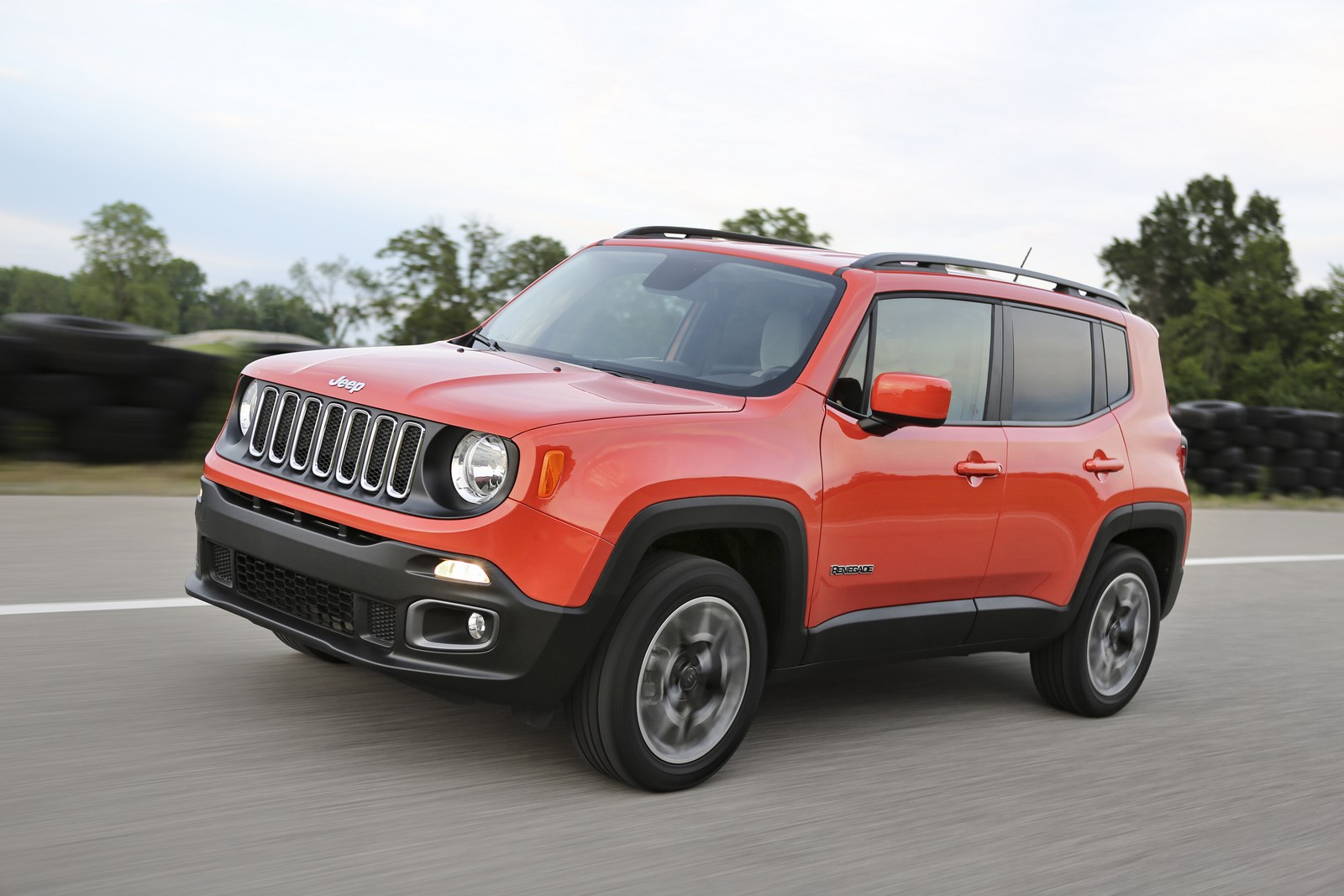
4. Jeep Renegade (2015–Present, Non-Trailhawk Trims)
On paper, the Jeep Renegade looked like an exciting proposition: a small, fuel-efficient SUV with a rugged personality and a name that hinted at rebellion and exploration. But beyond its quirky styling and clever marketing was a platform fundamentally unsuited to real off-road use.
Built on Fiat’s global small car architecture, the Renegade shares more DNA with European hatchbacks than with any real 4×4. While the Trailhawk trim adds some legitimate trail features like increased ground clearance, tow hooks, underbody protection, and Jeep’s Active Drive Low system, the majority of Renegade trims lack these enhancements entirely.
The base and mid-level trims of the Renegade suffer from low ground clearance, poor approach and departure angles, and weak drivetrain components. Most come with an all-wheel-drive system rather than a true 4WD, and they rely heavily on software to manage traction, rather than mechanical locking differentials or torque-splitting transfer cases.
The nine-speed automatic transmission, shared with other FCA models, has been frustrating for Renegade owners. It is known for harsh shifts, gear hunting, and even total failure under sustained load conditions easily encountered during even light off-roading.
In practical terms, non-Trailhawk Renegades have been shown to struggle with wet grass, small ditches, and mild ruts that traditional Jeeps would laugh at. Attempting anything more serious often leads to underbody damage, overheated drivetrains, or software-induced limp modes.
Many owners who purchased the Renegade expecting a mini-Wrangler experience were let down. The vehicle simply wasn’t designed for trail abuse, and it shows. While the Trailhawk variant offers a respectable effort to bring some trail capability into the segment, the rest of the Renegade lineup is little more than a city-friendly compact car dressed in off-road cosplay. For serious off-roaders, it’s a Jeep in spirit only, not in performance.
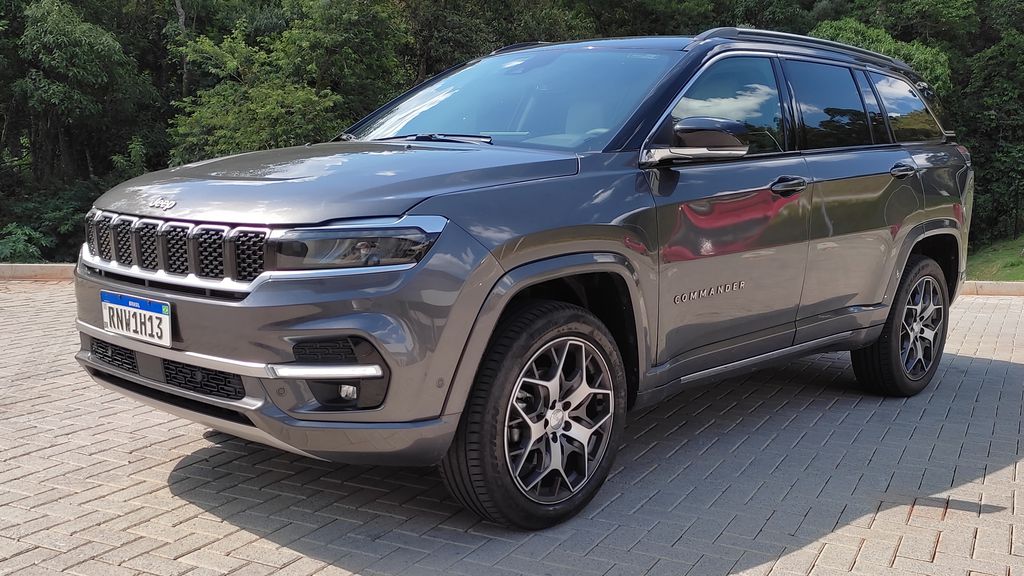
5. Jeep Commander (2006–2010)
When Jeep introduced the Commander, it aimed to create a full-size, three-row SUV that could serve families while maintaining off-road prowess. In theory, it was a compelling idea: blend the ruggedness of the Grand Cherokee with added passenger capacity and a bolder design.
In reality, the Commander was a bloated, awkwardly styled vehicle that struggled to fulfill either mission. Despite offering the powerful 5.7L HEMI V8 and the sophisticated Quadra-Drive II 4WD system in higher trims, the Commander’s sheer size, weight, and poor reliability made it a questionable choice for anyone serious about off-roading.
Weighing in at over 5,000 pounds, the Commander was simply too heavy and bulky for technical trails. Its long wheelbase and boxy shape made it difficult to maneuver in tight spots, while the additional length compromised its breakover angle. Even though it featured advanced off-road tech, its geometry worked against it. Many owners who took their Commanders off-road found themselves scraping bumpers, getting hung up on rocks, or bottoming out in unexpected places.
And those who pushed the vehicle hard often encountered issues with the air suspension, electronic controls, and drivetrain durability. Transmission overheating, axle seal leaks, and electrical gremlins were just a few of the problems that plagued this model.
What’s more, the Commander’s build quality left much to be desired. Interior materials were cheap for their price point, and long-term reliability was poor. Reports of water leaks, failing sunroofs, and dashboard electronics malfunctions were common. As a result, many owners abandoned off-road aspirations altogether and relegated the vehicle to urban family-hauling duty.
The Commander serves as a perfect example of how a vehicle can be “technically capable” yet still fail to perform due to poor design execution and mechanical fragility. It had the heart of a Jeep, but the body of a minivan and the reliability of a problem child—making it one of the brand’s most disappointing attempts at combining utility and adventure.
Also Read: Top 10 EV Features That Come in Useful in Daily Commute
In the world of off-roading, the name “Jeep” carries both prestige and expectation. For decades, the brand has cultivated a powerful image of capability, resilience, and exploration, with vehicles like the Wrangler and Cherokee carving a permanent place in the off-road hall of fame.
But as we’ve explored, that legacy is far from uniform across the entire Jeep lineup. Some models rise to the challenge of rugged terrain and unforgiving trails with ease, while others falter under pressure, proving to be more marketing exercise than mechanical masterpiece.
The difference lies not just in engineering but in intent. Models like the Wrangler Rubicon, Cherokee XJ, Gladiator Mojave, and Grand Cherokee Trailhawk were purpose-built with off-road performance in mind. They feature robust underpinnings—solid axles, low-range gearing, locking differentials, heavy-duty suspensions—that allow them to tackle diverse and demanding landscapes.
These Jeeps are more than just capable; they’re dependable. They don’t just survive the trail—they dominate it. For enthusiasts who want a machine that feels at home on a mountain pass or in the middle of the desert, these are the models that deliver on Jeep’s storied promise.
Conversely, there’s another side to the Jeep coin. Models like the first-generation Compass, Patriot, Liberty KK, and standard-trim Renegades might look the part, but they lack the substance required to endure real off-road use. Whether it’s because of fragile drivetrains, insufficient ground clearance, unreliable transmissions, or poor design choices, these vehicles frequently underperform when the going gets tough.
They’re not inherently bad vehicles—they simply weren’t engineered with serious trail use in mind. Unfortunately, the Jeep badge carries expectations that these models often can’t fulfill, leading to frustration among buyers who believed they were getting the full Jeep experience.
For consumers, the lesson here is critical: not all Jeeps are created equal. If you’re in the market for a vehicle that will serve you well off-road, you must look past branding and styling and dig into the specs that matter. Suspension type, axle strength, drivetrain configuration, and real-world reliability history are more important than badges and advertising.
Jeep has made it easier in recent years by offering “Trail Rated” designations and more trail-focused trims like the Trailhawk and Rubicon, but even these require scrutiny. Not every Trail Rated Jeep is created for the same level of terrain.
Ultimately, Jeep remains one of the most iconic names in the off-road world—and rightfully so. But within its lineup, there are both champions and pretenders. By separating the true beasts from the breakdown-prone models, off-roaders can make informed decisions and invest in vehicles that will take them as far into the wilderness as their courage will allow.
Whether you’re climbing rocks or just dreaming of adventure, knowing which Jeep to trust can mean the difference between the trip of a lifetime and a costly rescue call. Choose wisely—and stay trail-ready.

